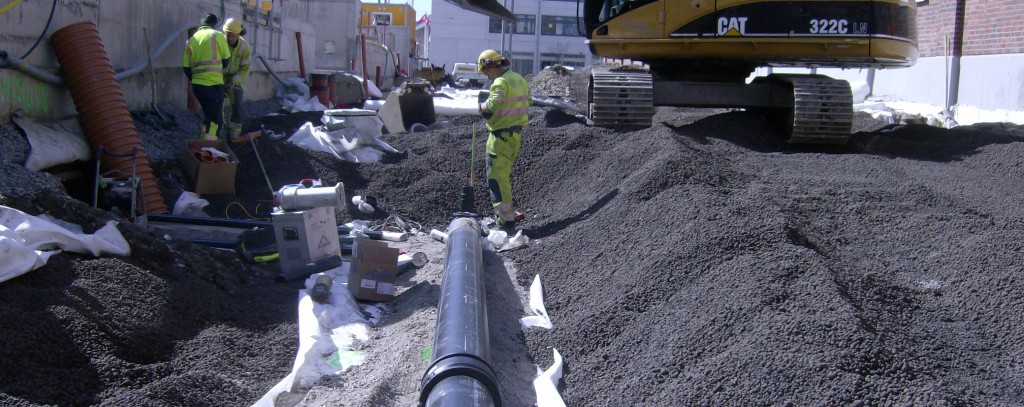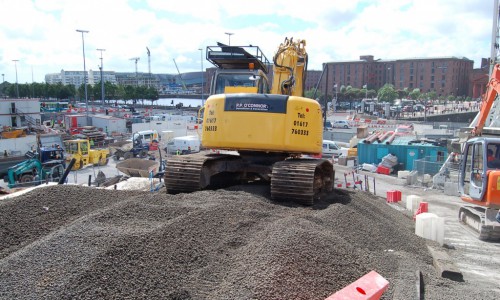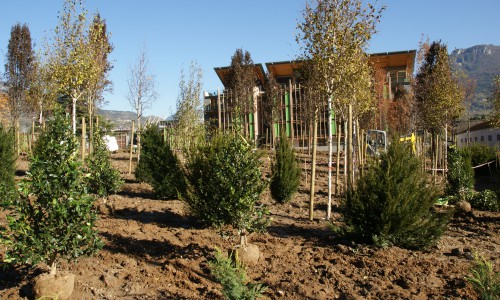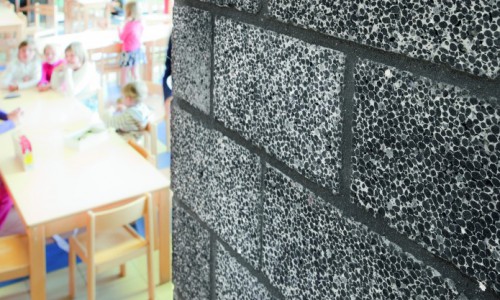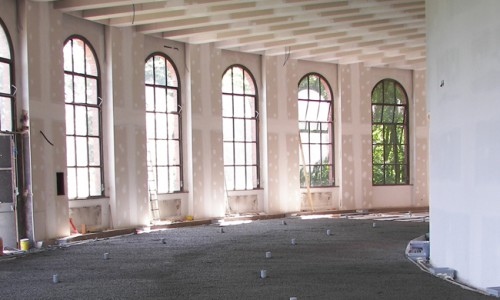
EXPANDED CLAY IN GEOTECHNICAL APPLICATIONS
Expanded clay has been used as a geotechnical fill material in many European countries since as far as back as 1958. It possesses properties that can solve many problems simultaneously, providing simple solutions to a wealth of civil engineering challenges. With low weight and high strength, it can reduce settlement, earth pressure and risk for stability failure. Drainage and insulating properties also proves valuable in numerous applications in and around buildings, sport fields and installations.
Expanded clay in civil engineering applications in covered and declared by European standard EN 15732, Lightweight fill and thermal insulation products for civil engineering applications (CEA) – Expanded clay lightweight aggregate products (LWA).
Low density and ease of handling, coupled with consistent high quality, make expanded clay a highly competitive alternative to other lightweight materials. Expanded clay can be tipped into an excavation or pneumatically blown directly on site. Expanded clay is a material with a low degree of compaction. Depending on application choice of transportation and handling will differ. Best practice on how to install expanded clay can be found in the EXCA report 2015/TR/001 in the technical library.
The grading of expanded clay for most geotechnical applications is 10-20 mm or 0-30 mm.
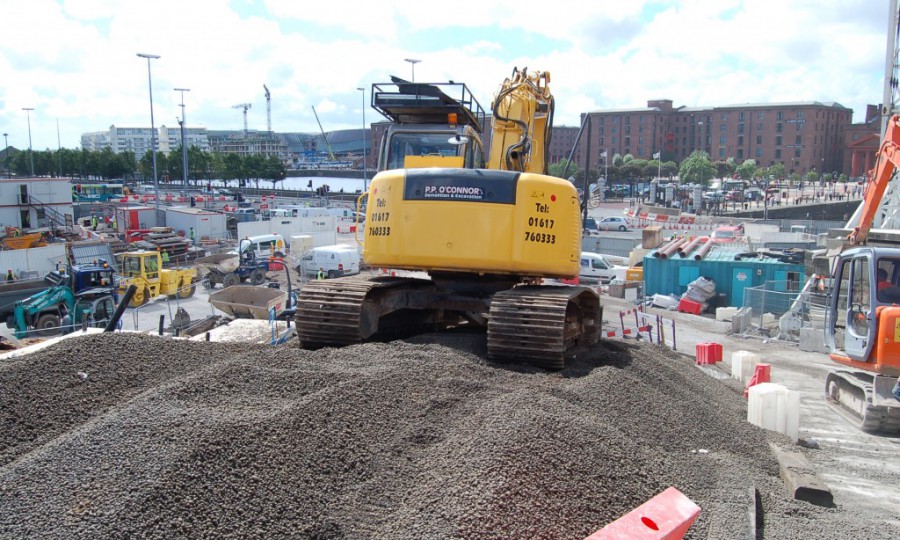

HARBOURS
When constructing quays, the soft ground conditions often call for the use of lighter fills to guard against slides or deformation that can damage structures and several solid berth structures have been built in recent years using expanded clay. It can be used to an advantage in many quay designs such as sheet pile, sheet pile cell and caisson structures and is also used as fill replacement in solid berth structures when quayside waters are dredged to greater depths.
Expanded clay not only has a very low unit weight, it also has minimal buoyancy, making it particularly suitable for filling directly into water. By depositing the aggregate directly into place from a boat equipped with its own offloading gear, exceptionally fast progress can be made with 250-300 cubic meters per hour quite achievable.
The drainage properties of expanded clay prevent water pressure build up during the filling and due to changes in water levels in the final construction.
LANDSCAPING
Thanks to its bearing capacity, high internal friction angle and unlimited lifespan, expanded clay is the most efficient foundation material available to use in landscaping. It improves stability, reduces settlement, allows load compensation, supplies durable drainage, is easy to use and respects the environment. On top of this, it allows you to improve the aesthetic appearance of your terrain in a very effective way.
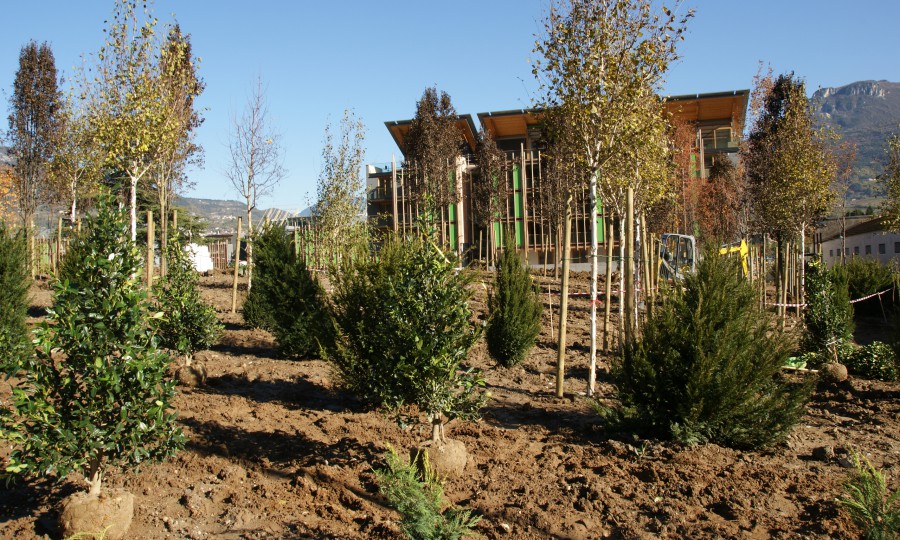
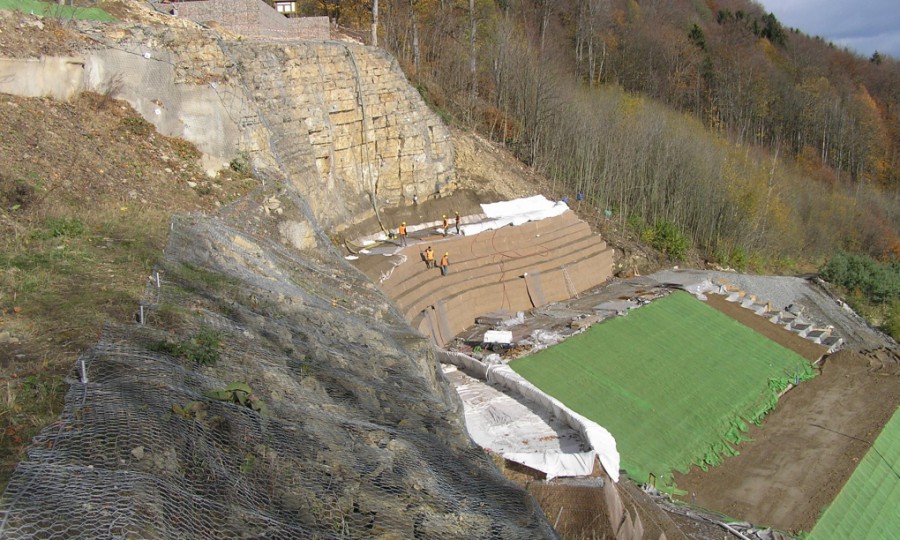
RETAINING STRUCTURES
When used against retaining walls expanded clay will reduce the weight acting on the rear of the structure by approximately 75%, in comparison to traditional fill materials. This reduction in weight avoids potential sliding, overturning, slip and tilting or bearing failures and enables savings by increasing spacing between buttressing walls and reducing structural dimensions. The bulk weight of the wall can also be reduced and more cost efficient, attractive materials can be used in place of costly, unattractive structural concrete.
The use of expanded clay will also minimise the differential settlement between piled bridge abutments and the embankment fill. As it is a free draining material expanded clay, can also eliminate the need for rear wall block drainage. The ‘pull out’ resistance of expanded clay also makes it an ideal solution for reinforced soil retaining walls. Particularly when constructed over weak sub-soils or voids, this method can cut overall construction costs considerably.
SUR BASE COMPENSATION
Expanded clay grant thermal insulation and high drainage capacity with a very low density. These features may solve problems in the filling of foundations on soft layers that could not support the load of the building. In case of soils with low bearing capacity, that will have non-acceptable settlements, it’s possible to realize the foundation with expanded clay.
The load compensation method consists in the substitution of a natural soil mass with an equivalent expanded clay thickness so that the new load of expanded clay foundations plus the whole building load doesn’t exceed the natural soil load that has been removed.
Installation of expanded clay is very gentile with little disturbance to neighbouring constructions.
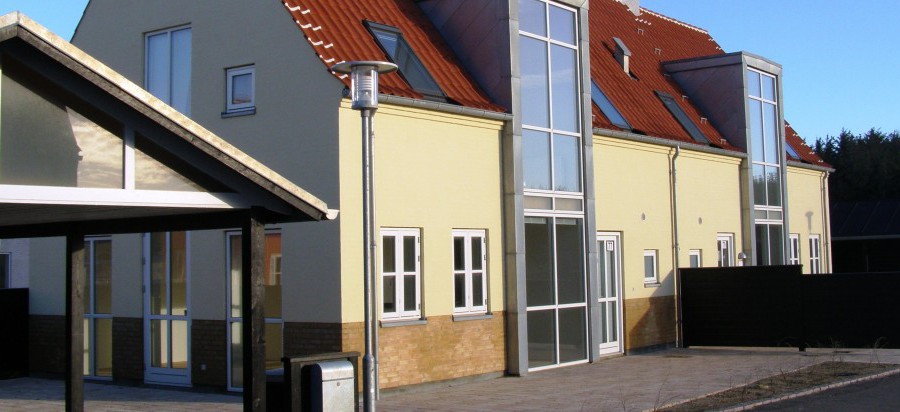
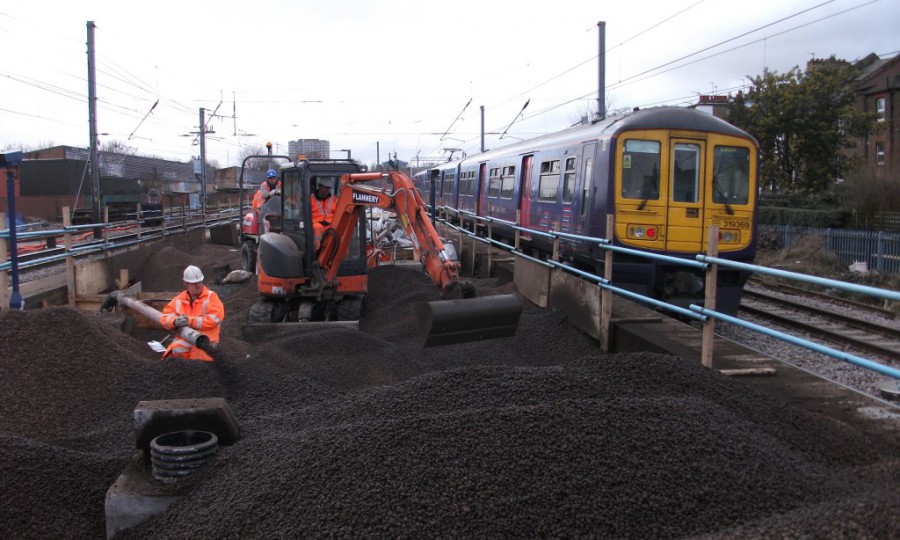
ROAD AND RAILWAY EMBANKMENT
Construction of embankments over weak and compressible soil deposits, where the loading of the embankment causes soil consolidation and settlement, or unsatisfactory stability, is common. Depending on the height of the embankment, the depth of the weak soil deposit and the consolidation properties of the soil strata, total and differential settlements can be very deep and problematic. By lightening the embankment with expanded clay, subsoil strengthening and lengthy settlement can be reduced or even avoided altogether. Expanded clay will also reduce the risk of bearing capacity failure and increase the stability of the side slopes.
Using free draining expanded clay within the road build-up with its high external porosity will break the capillary rise of ground water into the upper construction layers. It will also prevent streams of groundwater to cause damage to the embankment and can act as a balancing storage for temporary flooding. Expanded clay is also used for frost protection of roads and railways.
TUNNELS AND STRUCTURAL ELEMENTS
In areas, prone to mining subsidence or where ground conditions contain natural sub formation voids, drainage, culvert or tunnels and there is a danger of collapse, expensive techniques such as load transfer are often considered. However, using expanded clay can eliminate these costs and considerably lighten the load to provide similar benefits to those when used in weak soil areas.
During the construction of tunnels, unexpected voids and small cavities around the concrete may collapse on the structure. Lightweight filling with the use of loose or cement bound expanded clay can be archived with very low costs of handling thanks to the pumping opportunity.
To protect the tunnel from falling rocks, expanded clay reduces the impact.
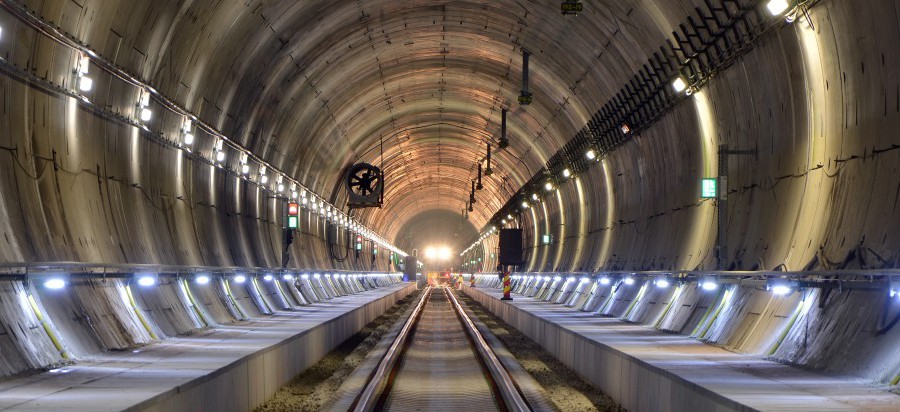
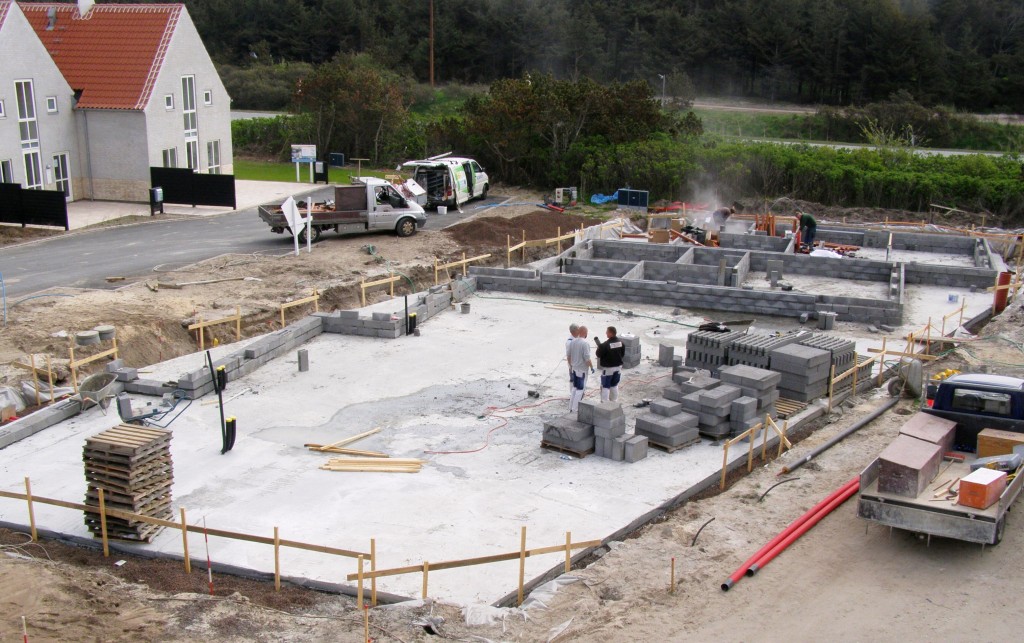
FILLINGS OF NATURAL AND ARTIFICIAL CAVITIES
The filling of underground cavities with expanded clay restores the subsoil situation as it was before with a low weight and environmental performance. The presence of a hole into the ground may concentrate traction and compressive strain that can conclude with the general collapse of the structure. Using expanded clay can avoid the concentration of the strains thanks to its high grain resistance that can redistribute the force diagram. By blowing expanded clay it is possible to fill hard to reach places. This will fill cavities and obtain high drainage capacity, good resistance and a stiffness like that of the natural original ground.
THERMAL INSULATION OF PIPELINES AND STRUCTURES
Maintaining levels within any foul or surface water drainage system can be difficult when the drain runs across a soft soil site. Expanded clay can be used as a lightweight pipe surround, reducing the pressure to the underlying soils and minimizing the likelihood of irregular settlement.
Surrounding utilities and drainage carried within bridge beams either side of the carriageway with expanded clay is a lightweight, simple to install alternative to that of sand traditionally used to support and insulate these services. The added benefit of using the lightweight round granules of expanded clay as a pipe surround is that there is better thermal insulation, little danger of any damage to pipelines during backfilling and the likelihood of damage from settlement is also reduced.
